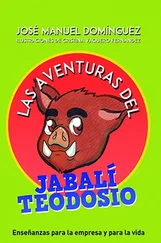(THELONIOUS was capable of mentally reproducing the evolution of the wristwatch from the massive oblong metallic rotundity so much in vogue at the beginning of the seventies to the superthin model of the mid-eighties. He visualized the process as if it were one of those educational films that show a sprout breaking through the shell of the seed and twirling up through layers of earth, continuing its ascent as a plant, turning to follow the path of the sun, losing its leaves, then disappearing, metamorphosed into pollen.)
I. With fabrics, with delicate ORGANDY, we can construct an ephemeral world of beauty. You must learn to distinguish the quality of a piece of cloth, its approximate value, at a glance.
I was sitting on the edge of the bed. LINDA passed in front of me and stepped out onto the balcony. The sea, its white foam. She had selected a string bikini that rode very high on the hips, but she seemed to notice something out there, the cypresses bent at a steep angle by a wind that was picking up, and she came back inside and changed into a lovely maillot, with real seashells sewn around the borders of the bust.
“A bathing suit is an abstraction, the smallest thing we can achieve with fabric,” I explained to her. “These little snippets of cloth allow you to emerge from animality, they block the mammary glands, the physiological, from sight, and thereby diminish the horror of the naked body.” LINDA was back out on the balcony, not listening.
“. . it represents the minimal effort of the human against the animal. Except that the wide straps of some of the older types of suits make them look a bit like underwear. That wouldn’t suit you. It’s the high chest that’s in style, the line of the bust raised. Why don’t you try on this pretty one-piece with a mesh back and a pattern of daisies and sunflowers. Except it makes you look even younger. . Doesn’t it amaze you how so few elements can transmit so many ideas? See what a fresh look those oversized buttons create! Okay, quite frankly, there’s not much more I can say about swimsuits: I find Lycra a bit disconcerting, it repeats the naked body in some way. What do you think about wrapping this delicate length of organdy around the hips? It will lift the ensemble a little, your legs showing through the transparency, their fierce line. .”
Finally LINDA was standing in front of the mirror trying on a little pea green hat.
“How’s this?”
“Look at that. . It’s amazing! That ORGANDY wrap can be even more interesting than a dress. But the shoes, LINDA! What shoes will you wear down to the beach? I’d completely forgotten about that. There’s nothing more difficult than choosing a pair of shoes for a swimsuit. If you wear that pair with high heels, I won’t be able to look at you when you walk along the path ahead of me. It disturbs me to see women dressed that way, far too approachable and defenseless, as if they were open to an activity considerably more intimate than a stroll. If you go barefoot, though, your walk will be somnambulant, arduous, and the slow dance of the organdy wrap will only heighten that impression. Try that nice pair of sandals we bought in Saint Petersburg, just before setting out on our trip. You’ve worn them all too often since then, but I can’t think of anything better.”
PACKARD. I suspect that we are, to our Creator, as complex and mysteriously distant as machines, and that he swells with pride when he observes our perfection. In much the same way, we are unaware of the laws that govern the aesthetic evolution of the automobile; how it ceased to be the imperfect replica of a horse-drawn carriage and instead blossomed into the dazzling curves of the postwar PACKARD. Neither do we understand the first thing about the incurable malaise that has attacked the motor vehicles of today, the causes of the regression that makes them more alien and horrible to look upon each year. It is torture to watch how designers — perhaps perturbed by the idea of the archetypal auto, the mobilis —have gradually stripped them of mudguards, running boards, chrome diadems, nickel-plated hubcaps; how, trapped in a vortex of perpetual transformation, they’ve veered in the wrong direction toward functionalism, aerodynamics, an absurd notion of comfort. It requires a great effort to understand this, for we never imagine that a hundred years of evolution could be enough to exhaust a set of forms; we continue to believe that thousands of different models, with new protuberances, await us — but that is not the case. The thesis of lineal progress ad infinitum denies what we know about the spiral of development with its declines and recoveries. And it’s clear that we now find ourselves at the end of a phase, LINDA, very far from the decade of true splendor to which this PACKARD belongs. You can’t imagine how much work it was to find it. You Russians have nothing from this period; the entire stratum is empty, nary a molar nor an occipital bone pitted with holes: nothing. This model is from ’49 (the straight-eight engine, three speeds, maximum velocity ninety-five miles per hour) and I’ll have you know that according to the crook at the rental agency this car once belonged to Beria, the fearsome Minister of the Interior. Ah, yes, the inevitable mythic provenance that adds 15 percent to the price. I didn’t hesitate to pay, the very latest fashion in cars is to prefer these beautiful models from the forties, built for an efficient drive, conscientiously prepared for the road like those elderly couples, tourist fossils from the BADEN-BADEN era, who buy pith helmets, binoculars inlaid with mother-of-pearl, a rattan basket for provisions, a cashmere throw against the evening chill, sunglasses with tortoiseshell frames. A lost precision: the visible evidence of expenditure. When I was a boy I’d help my grandfather wax his Oldsmobile and shine its nickel-plated grille. Then we’d go for a ride, simply to enjoy the pleasure of speed: the tufted leather upholstery, the steering wheel’s imitation-bone Bakelite. I would sit very close to him, not wanting to miss any part of the way he yanked the stick shift and slammed on the clutch. Alongside us were Pontiacs and the omnipresent Chevrolets, the couples within them embracing as if they were relaxing on an enormous sofa, Paul Anka blasting from the RADIO. . How to explain this to you?
I know you would have preferred one of those modern cars from Japan. I’ve learned to hate them. Japan is nothing but a parvenu in the OCCIDENTAL work of machinery, a clever imitator, incapable of capturing the profound logic that underlies the four speeds of the internal combustion engine. Have you ever seen a Japanese oil painting? It’s the same thing. The coloring is sickly, the composition chaotic, the touch of the brush uncertain. Where automobiles are concerned, they haven’t been able to come up with an equivalent to the fine technique of an Utamaro, a Suzuki Harunobu, those exquisite woodblock prints on rice paper. Only the Chinese, far wiser, have discovered the crowd of cyclists, the hybrid rickshaw. Isn’t the apparent ease with which a cyclist pedals, though all his muscles are straining, more Oriental? As is the modest size of the sedan chair. But this tendency toward lightness, when translated into automobile design, brought on the disaster of the horrible Nissan, the irresponsible airiness of the Mazda. The Japanese invasion has been successful because it found an important chink in the OCCIDENTAL bloc: the aerodynamic tendency. Evidence of which can be found in the showy “ducktail”—you see? Flight! — at the beginning of the sixties. Then in the seventies the Arabs had us worrying about not using so much oil, which meant we were ready when Ford, in despair, launched its execrable Torino, an entirely plain vehicle, nothing at all for the imagination to cling to, antiseptic.
Читать дальше












